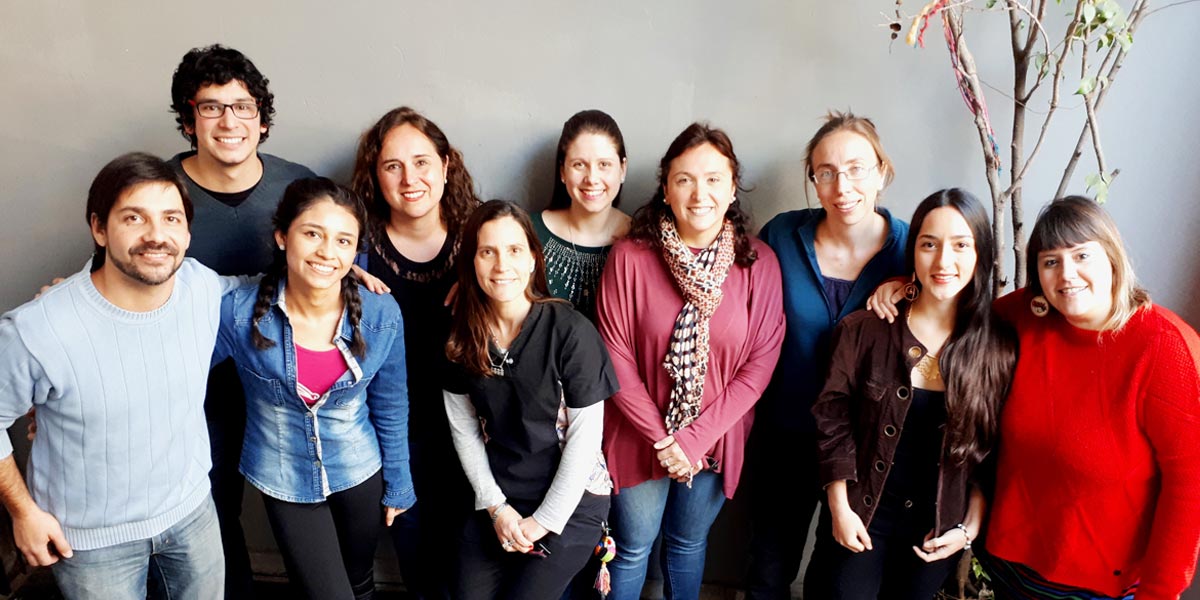Our work group develops activities to elucidate the mechanisms of action and cellular processes that are triggered in microorganisms by exposure to different environmental conditions.
Our research includes several lines, all of them with basic and applied approaches, and of considerable public and regional interest. Initially, our group focused on the study of heavy metal interactions with some bacterial cellular components, which allowed us to describe the process of copper cell reduction dependent on the Escherichia coli respiratory chain.
Currently, we focus on the study of phosphate and polyphosphate metabolism in relation to physiological changes associated with redox metabolism, resistance to heavy metals and biofilm formation in different bacteria of clinical, agronomic and biotechnological interest.
On the other hand, our working group studies the action of chemical substances to generate alternatives to fungicides of conventional use against fungal diseases of lemons, fruit of socio-economic interest in our province. In this subject, the physiological and morphological state of fungi after different treatments is also analyzed, in order to elucidate the mechanisms of action that lead to the inhibition of these microorganisms.
The last lines incorporated to the group address from a genetic approach the resistance to fungicides of local isolates of phytopathogenic fungi and the early diagnosis of infections related to bacterial biofilms.
Most of our researches involve collaborations to obtain a more complete understanding of the biology of organisms and the relationship with the natural environment in which they are immersed.
1. Generation and application of new strategies for the non-polluting control of postharvest diseases in citrus.
2. Genetic mechanisms involved in the resistance to fungicides of local isolates of phytopathogenic fungi affecting crops of commercial interest for NOA region.
3. Modulation of polyphosphate intracellular levels in bacteria: physiological and molecular aspects. Potential biotechnological applications.
4. Identification of microbial biomarkers for the development of new techniques directed to the early diagnosis of bacterial biofilms in medical devices.
STAN – ST2446 Fungicide development for the control of fruit diseases
Technical advisory service to regional companies in the evaluation of the effectiveness and in the optimization of the use of phytosanitary products, destined to the management and control of fungal diseases that affect the fruit production.
Villegas, J. M., Volentini, S. I., Rintoul, M. R., Rapisarda, V. A. (2011) “Amphipathic C-terminal region of Escherichia coli NADH dehydrogenase-2 mediates membrane localization” Arch. Biochem. Biophys. 505, 155-159.
Volentini, S. I., Farías, R. N., Rodríguez-Montelongo, L., Rapisarda, V. A. (2011) “Cu(II)-reduction by Escherichia coli cells is dependent on respiratory chain components” Biometals. 24, 827–835.
Grillo-Puertas, M., Villegas, J. M., Rintoul, M. R., Rapisarda, V. A. (2012) “Polyphosphate degradation in stationary phase triggers biofilm formation via LuxS quorum sensing system in Escherichia coli” PLoS ONE 7, e50368.
Cerioni, L., Sepulveda, M., Rubio-Ames, Z., Volentini, S. I., Rodríguez-Montelongo, L., Smilanick, J. L., Ramallo, J., Rapisarda V. A. (2013) “Control of lemon postharvest diseases by low-toxicity salts combined with hydrogen peroxide and heat” Postharvest Biol. Technol. 83, 17-21.
Olmedo, G. M.; Cerioni, L.; González, M. M.; Cabrerizo, F. M.; Volentini, S. I.; Rapisarda, V. A. (2017) “UV-A photoactivation of harmol enhances its antifungal activity against the phytopathogensPenicillium digitatum and Botrytis cinerea”. Frontiers in Microbiology. 8, 1-9.
Ruiz V. E., Cerioni L., Zampini I. C., Cuello S. , Isla M. I., Hilal, M., Rapisarda V. A. (2017) “UV-B radiation on lemons enhances antifungal activity of flavedo extracts against Penicillium digitatum” LWT – Food Science and Technology. 85, 96-103.
PICT 0595.“Alternatives for the control of phytopathogens that cause postharvest diseases in lemon: use of UV-B radiation and low toxicity chemicals”. Director PHD Viviana A. Rapisarda. 2018-20122.
PUE 2016. “Biological strategies to add value to the production of agrifoods of interest in the NOA region”. Technical Supervisor PHD Viviana A. Rapisarda.
PICT 0326 Young Researcher. “Modulation of intracellular levels of polyphosphate in lactic bacteria. Physiological, molecular aspects and potential biotechnological applications”, INSIBIO. Director PHD Josefina M. Villegas. 2017-2019.
PICT 1744 Young Researcher. “New strategies for the non-contaminating control of postharvest diseases of lemons, a crop of socio-economic relevance in the Argentine Northwest”, INSIBIO, Director PHD Luciana Cerioni. 2017-2019.
D627. “Alternative treatments for the control of phytopathogens causing postharvest diseases in lemons”, INSIBIO. 2018-2022. Director PHD Viviana A. Rapisarda.
PIP 611. “Modulation of intracellular levels of polyphosphate in bacteria: associated physiological changes and potential biotechnological and agronomic applications”, INSIBIO. Director PHD Viviana A. Rapisarda. 2016-2019.
Independent Researcher, CONICET
email: vrapisarda@fbqf.unt.edu.ar
Assistant Researcher, CONICET
email: lucerioni@hotmail.com
Assistant Researcher, CONICET
email: marianagrillo24@gmail.com
Assistant Researcher, CONICET
email: josefinamvillegas@gmail.com
Assistant Researcher, CONICET
email: svolentini@gmail.com
College Professor – UNT
email: orenes@gmail.com
College Professor – FCN – UNT
email: mhilal09@hotmail.com
CERELA – CONICET.
email: ehebert@cerela.org.ar
Former Postdoctoral Fellow INSIBIO – CONICET
email: ana.ramallo@gmail.com
College Professor – FAZ – UNT
email: rpedraza@herrera.unt.edu.ar
Citrícola San Miguel S.A.
email: jramallo@sanmiguelglobal.com
CONICET
email: vero_eikon5@hotmail.com
Adjunct Professional, CONICET
email: mariodebes@gmail.com
CONICET
email: mario_2009-92@hotmail.com
CONICET
email: carinabaigorria_92@hotmail.com
CIN Scholarship
email: jzuluagaa@uqvirtual.edu.co
CONICET
email: me48_89@hotmail.com





